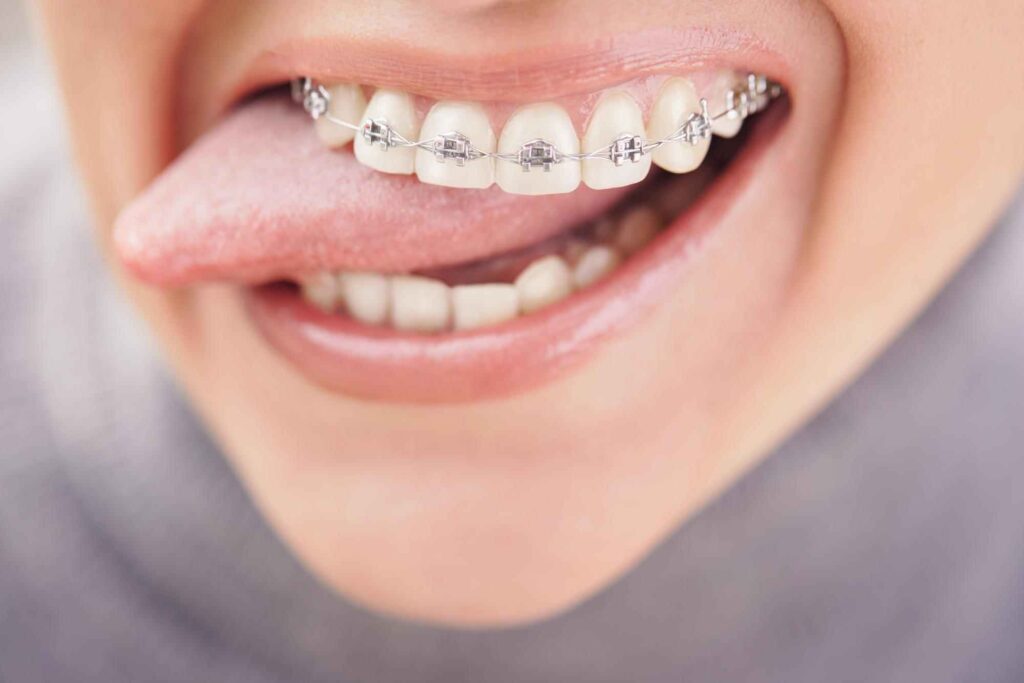Did you know that more than 4 million people in the United States are now wearing braces? You might not notice many since patients now a days prefer to wear transparent and, hence, less conspicuous ceramic braces. So, are ceramic braces better than metal? Unfortunately, the answer is not as simple as a yes or no.
Before seeing your local orthodontist about ceramic braces, there are a few things to consider. For example, have you been informed about the care necessary to keep ceramic braces clear? What about comparing the cost efficiency of metal braces?
Also, when it comes to treating dental disorders or misalignments, there is no one-size-fits-all solution. Hence, choosing between ceramic braces and metal braces might be a difficult decision to make. Each alternative has its own set of benefits and drawbacks that can affect the entire treatment process.
This article looks at the topic of ceramic braces vs metal braces in detail. It explains the significant differences between them, offering a thorough comparison to help you make an informed selection.
What are Metal Braces?
Metal braces are a popular orthodontic treatment used to rectify misalignments like crossbites. While not the most cosmetically attractive alternative, they are very effective. They have a track record of successfully straightening teeth and addressing bite abnormalities. They are solid and can endure a variety of orthodontic changes.
Metal braces are made of metal brackets that are glued to the teeth and linked by wires. These wires are gradually tightened over time, exerting moderate pressure that aids in shifting the teeth into the correct position.
If you are considering metal braces to address your bite issues, it’s essential to consult with an orthodontist. They can provide personalized guidance and create a treatment plan tailored to your specific needs.
What are Ceramic Braces?
Ceramic braces work like metal braces only but with a twist. These braces are composed of translucent or tooth-colored materials. So they are less visible than metal braces. They function by exerting constant pressure on the teeth, gradually moving them into the proper position.
Ceramic braces are certainly an efficient way to straighten misaligned teeth and improve bite function. The ceramic material mixes in with your teeth’s natural colour, making orthodontic treatment more discreet. This might be especially useful when you are concerned about the visual impact of braces.
If you are contemplating orthodontic treatment for your crossbite, ceramic braces may be a good option for developing a straighter, healthier smile.
Ceramic vs. Metal Braces: What’s the Difference?
When it comes to metal vs. ceramic braces, several factors come into play. Here’s a comparison to help you make an informed decision:
| Criteria | Ceramic Braces | Metal Braces |
| Durability | Chances of chipping or cracking | Durable |
| Affordability | More expensive | Less expensive |
| Treatment Time | may operate faster in some circumstances | May take some more time |
| Playing Instruments | Less chances of interfering with instruments | Might interfere with playing wind instruments |
| Material | Tooth-colored ceramic | Stainless steel |
| Effectiveness in Complex Cases | Might not be suitable for some complex cases | Ideally suited for complex adjustments |
| Visibility | Less visible | More noticeable |
| Comfort | More comfortable | Less comfortable |
| Staining | More prone to stain | Less prone to staining |
Ceramic Braces vs. Metal Braces: Which is Best for You?
Each of these alternatives has its own set of pros and disadvantages, so it’s critical to thoroughly assess your requirements before making a choice. The following points may help.
-
Visibility:
Visibility is sometimes a big concern for those considering braces. If you value discretion, ceramic braces may be a better option. Their tooth-colored materials make them less apparent than typical metal braces.
-
Budget:
If money is an essential factor for you, it may have a big impact on your selection. As mentioned in the comparison table, the cost of ceramic braces is higher than that of metal braces.
-
Severity:
The intricacy of your orthodontic requirements is also a significant consideration. Metal braces may be a preferable solution for situations requiring increased toughness. They are often more robust, making them ideal for more challenging orthodontic treatments.
-
Personal Preferences:
Your lifestyle and everyday activities should also be taken into consideration when it comes to metal braces vs ceramic braces. If you play wind instruments, play contact sports, or participate in activities where braces might be obstructive, ceramic braces may be a better fit for you. They come in a smoother and less projecting shape, and they are removable!
-
Sensitivity:
Tolerance to pain and discomfort is an additional factor. Metal braces can cause discomfort in some instances because they come into touch with their cheeks and gums. If you are really sensitive, this may impact your decision to use ceramic braces.
So, deciding between metal and ceramic braces takes careful consideration of visibility, price, treatment requirements, lifestyle, and sensitivity. By considering these variables and receiving expert advice, you can make an educated selection that meets your specific needs and leads to effective orthodontic treatment.
Also, it is critical to see a knowledgeable orthodontist. They have the knowledge and experience to help you make the right selection for your orthodontic treatment by considering all of these crucial criteria.
FAQ
1. Is it possible to stain ceramic braces?
Ceramic braces may become discolored, primarily if not well maintained. To avoid discoloration, avoid meals and liquids that might stain, such as coffee, tea, and red wine. Also, practising proper dental hygiene is vital.
2. Which Type of Braces Is More Expensive?
Ceramic braces are often costlier than standard metal braces because of the materials used in them and the cosmetic benefits. However, the cost may vary based on the individual’s treatment requirements and the orthodontist’s fees.

0 comments on “Ceramic Braces vs. Metal Braces: Which One Should You Choose?”